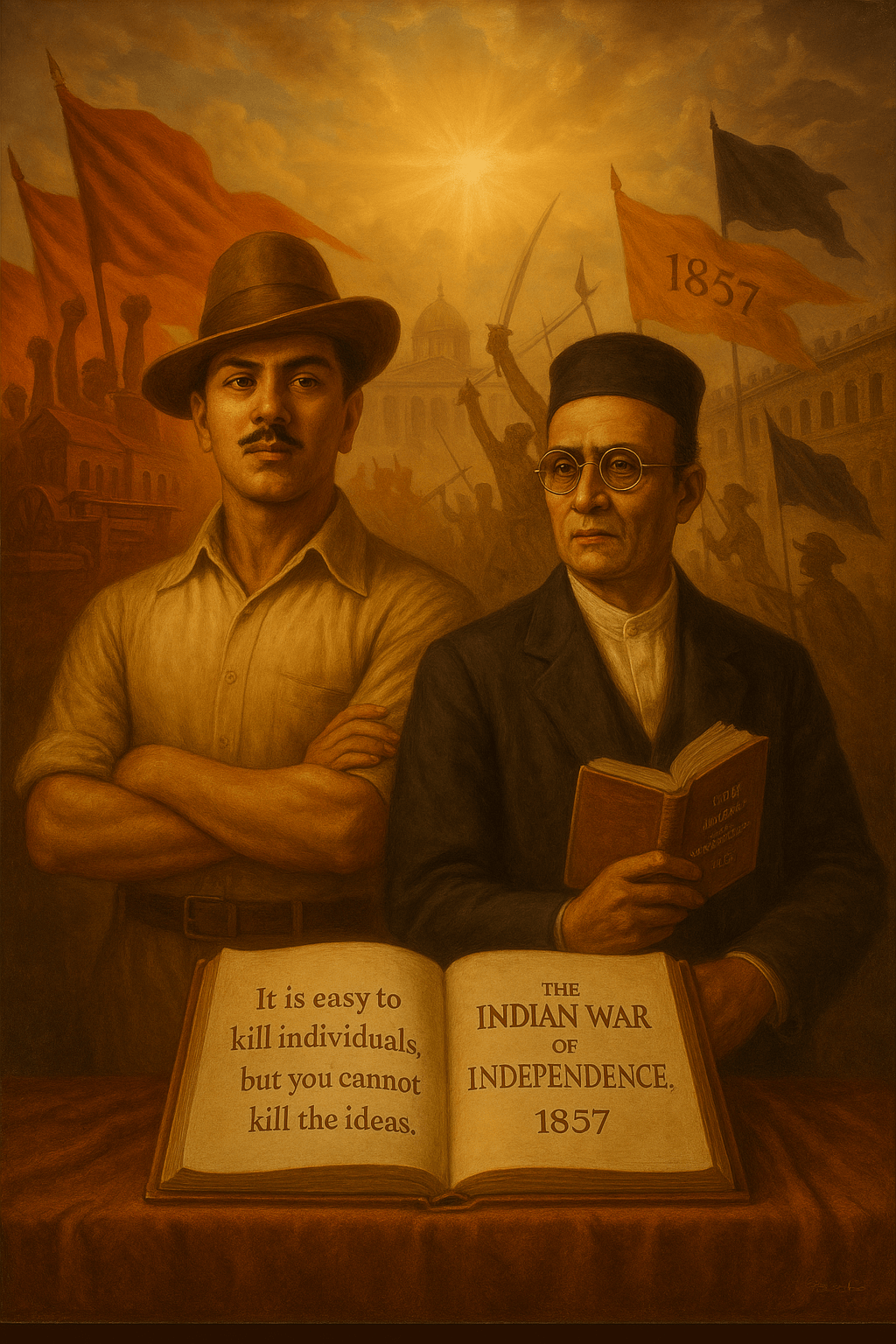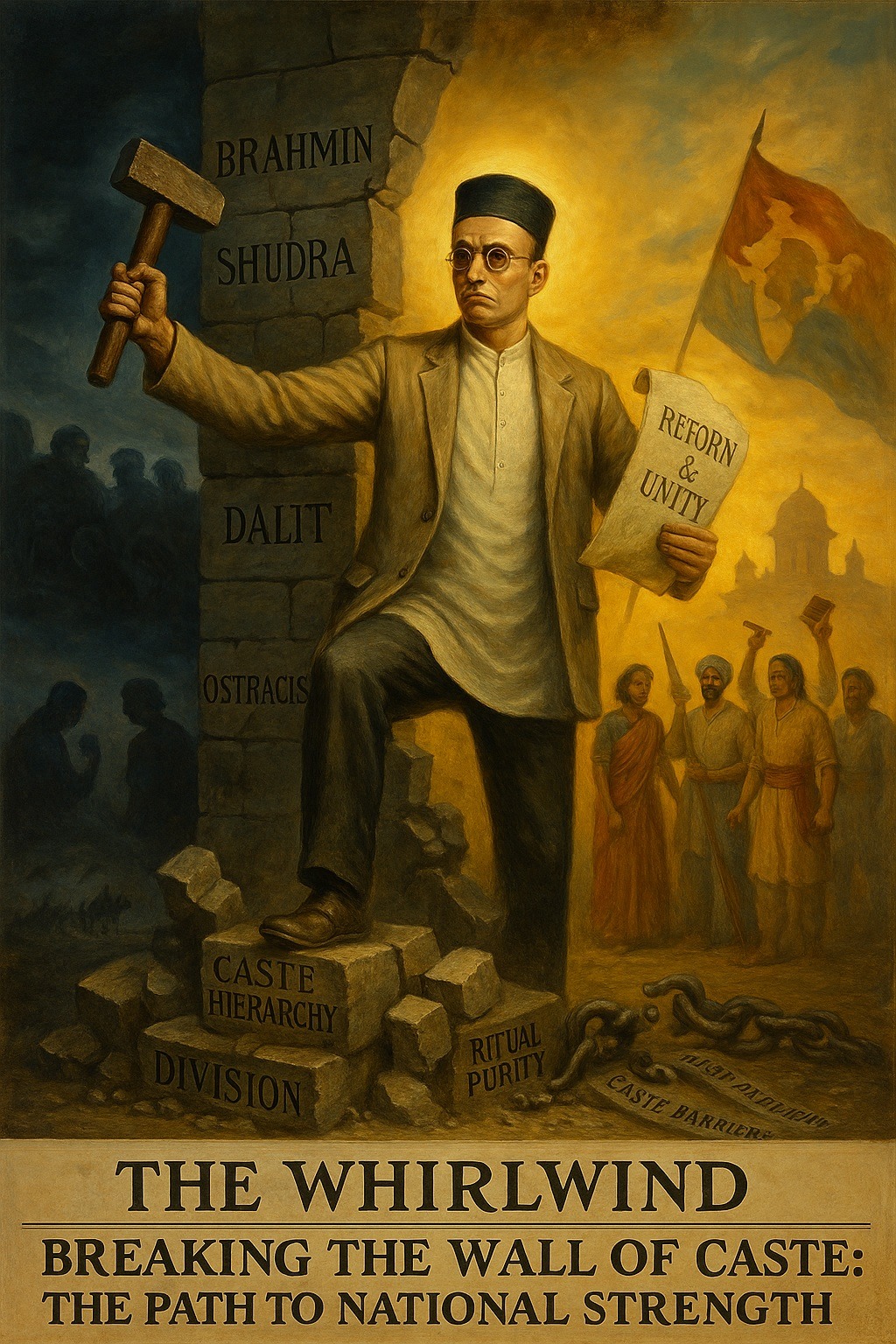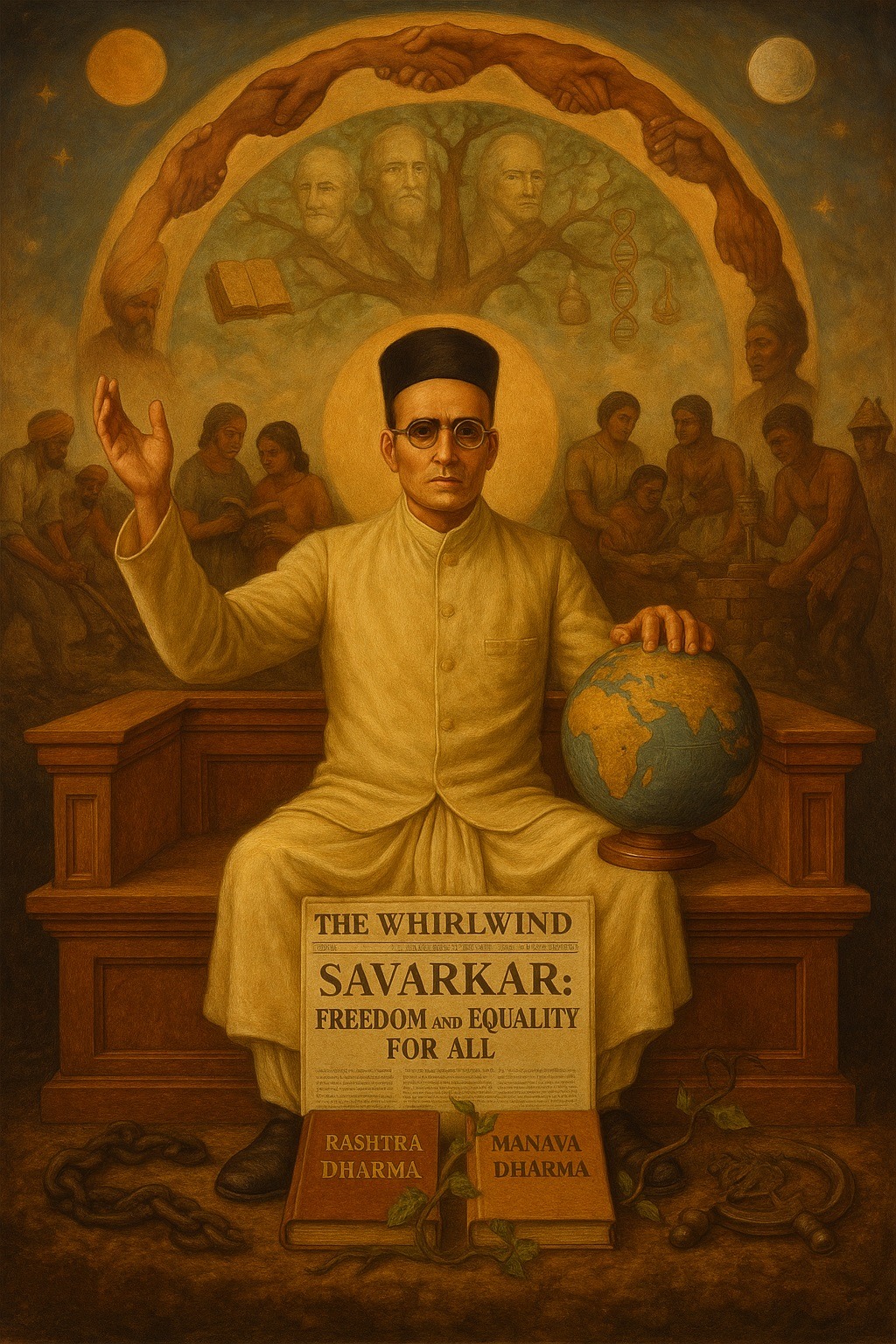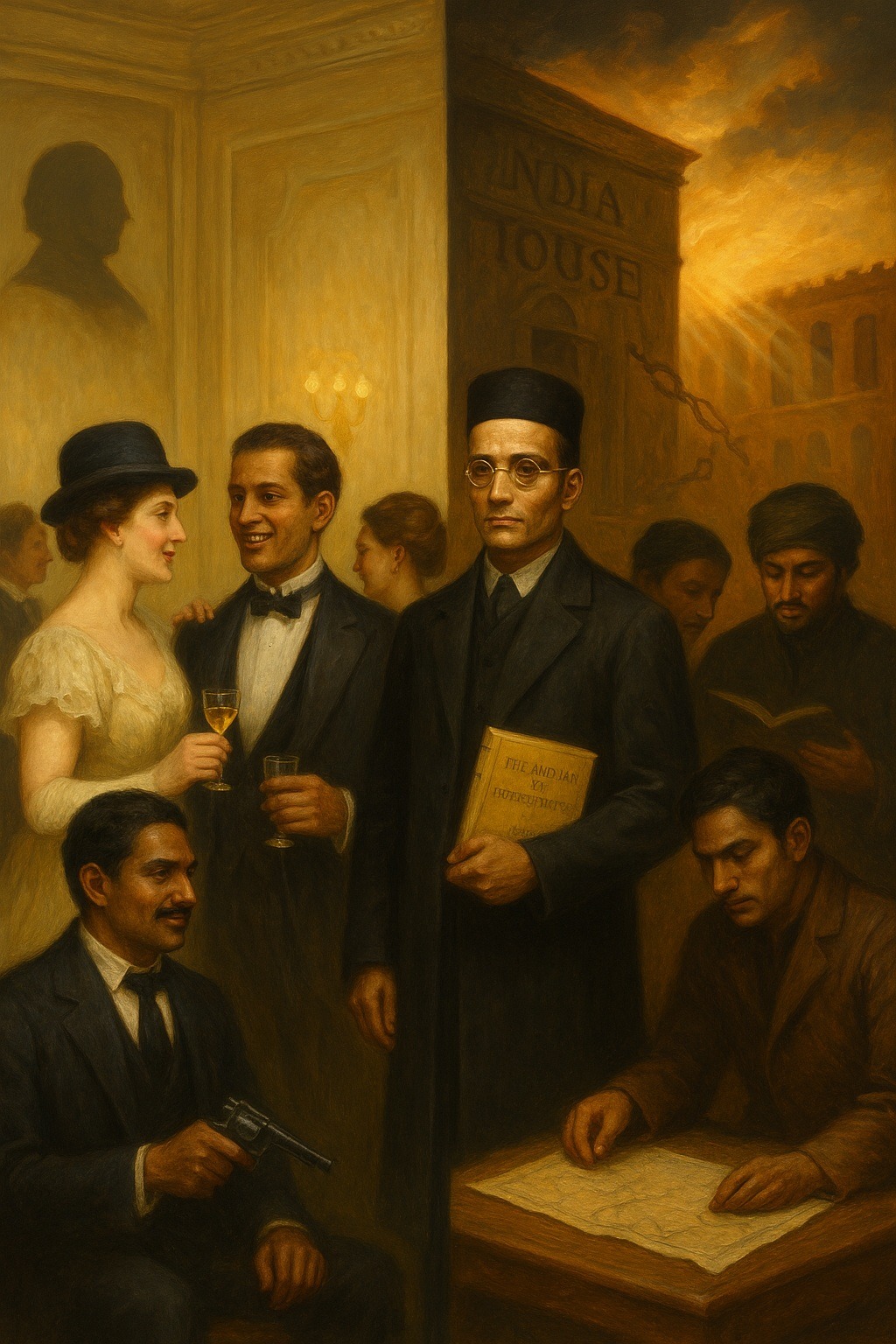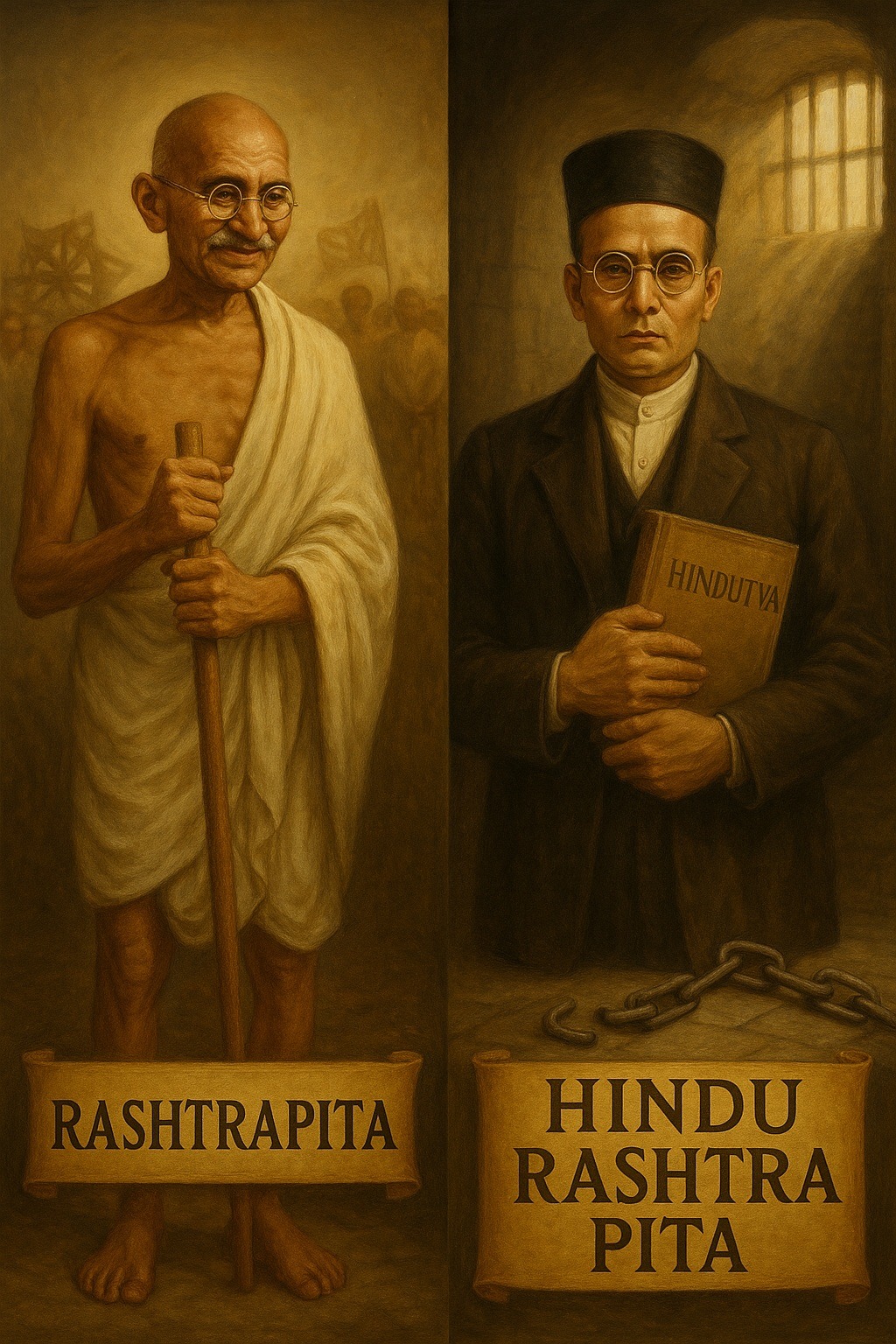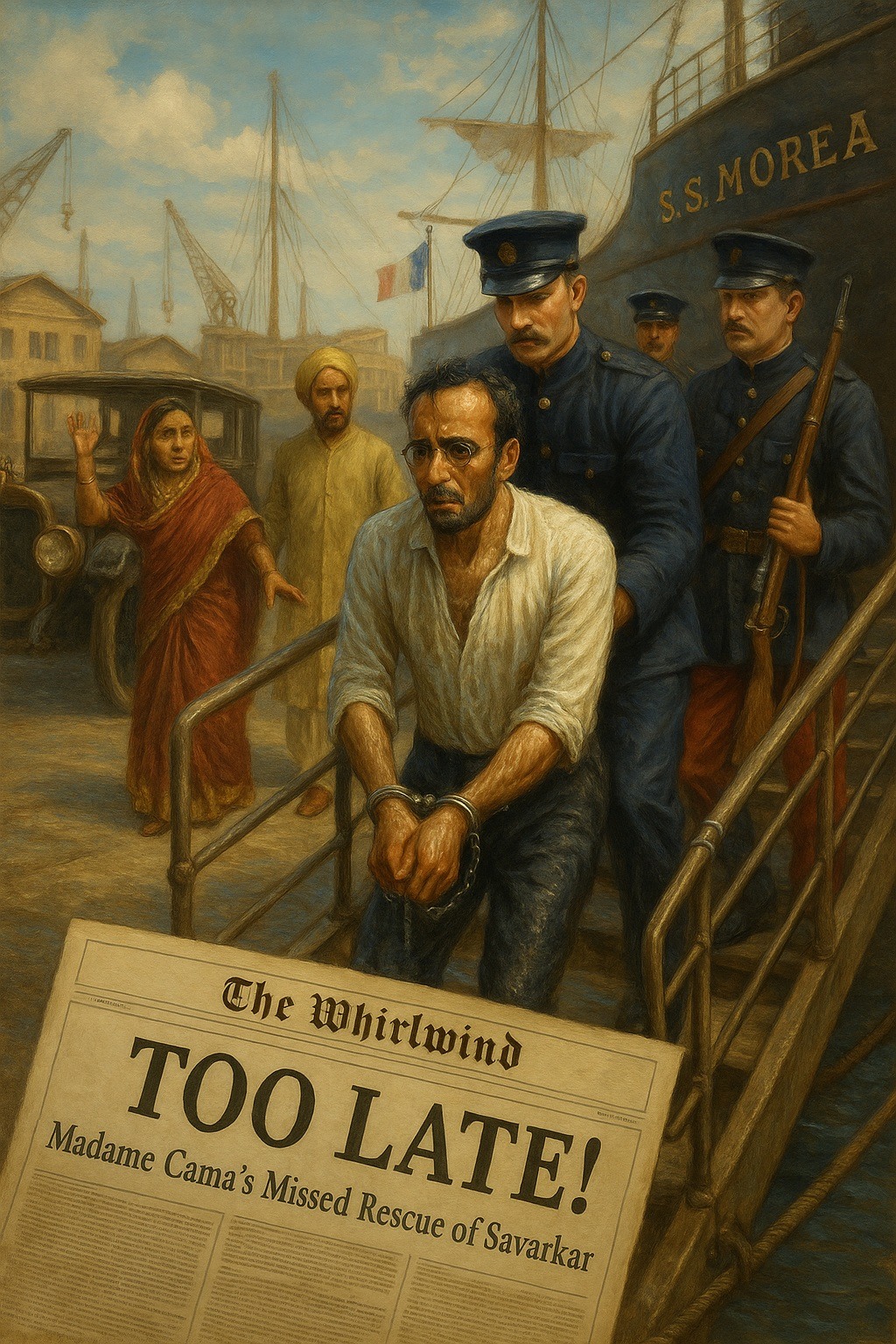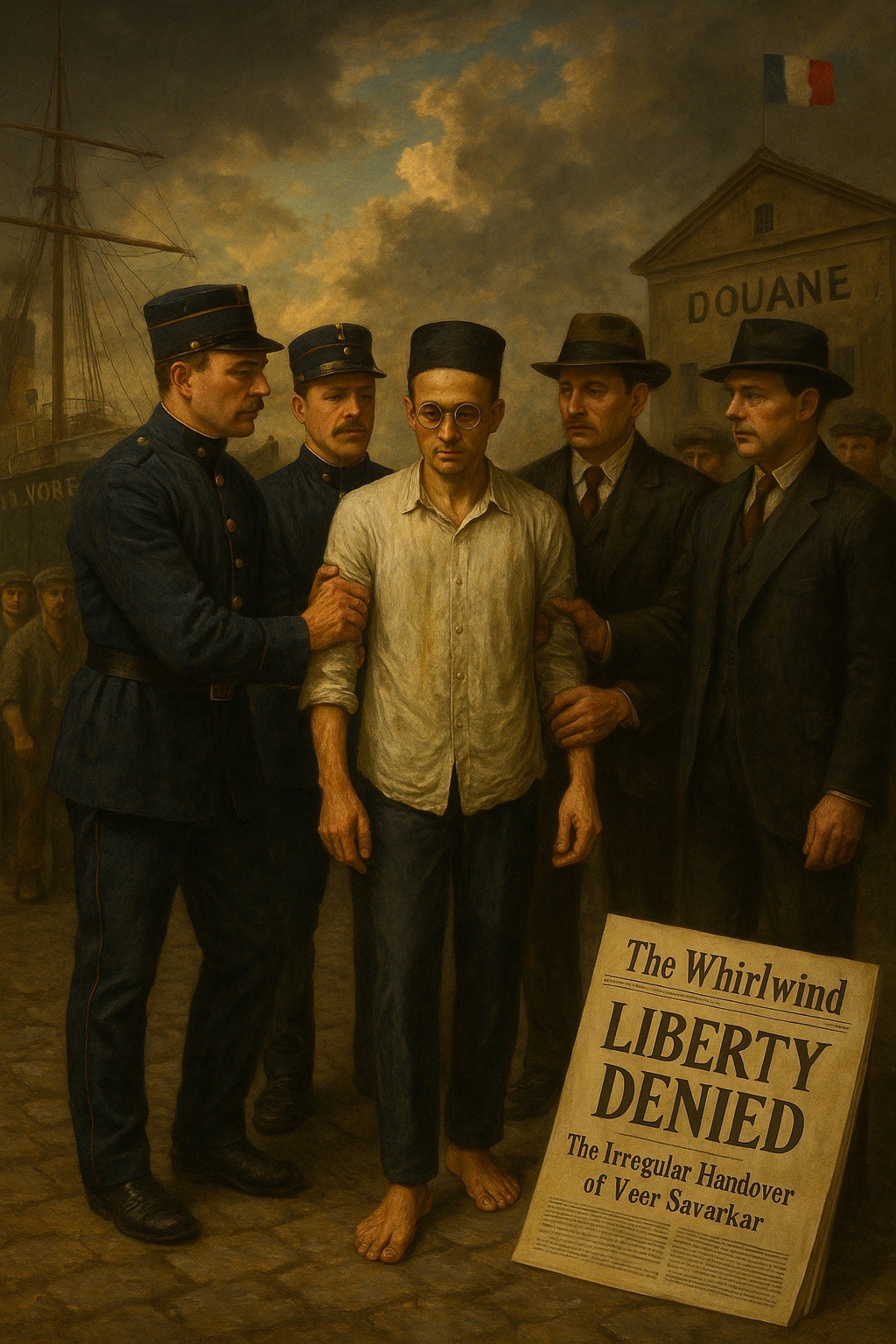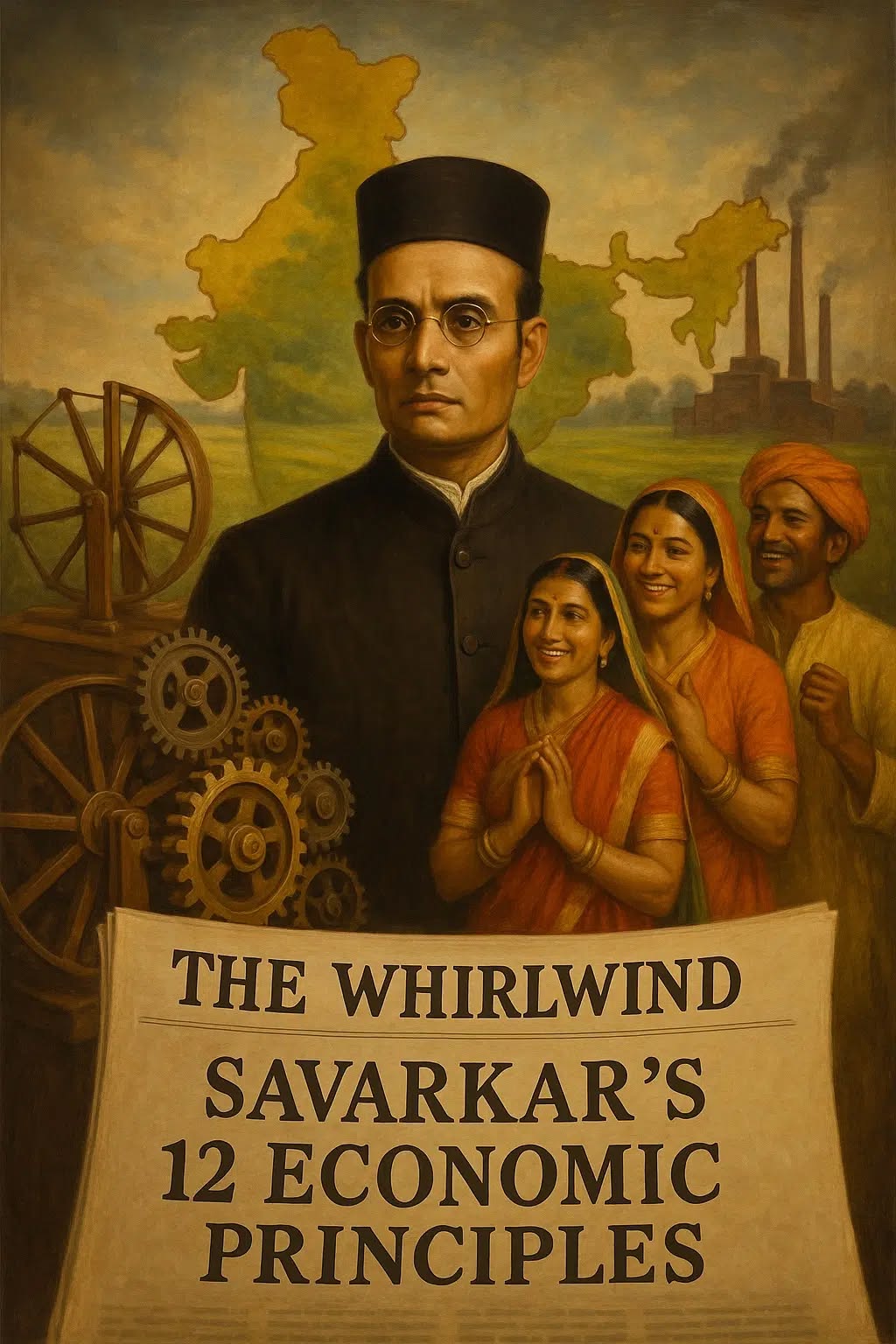All Blogs
Discover
The Whirlwind’s Archive
This section contains the complete archive of The Whirlwind is a blog dedicated to the life, thought, and influence of Vinayak Damodar Savarkar. Each entry explores aspects of his political action, philosophical thinking, social reform efforts, historical interpretations, and cultural legacy. The blog aims to offer critical insights into Savarkar’s role in shaping modern Indian political and ideological discourse.

-
Savarkar’s Democratic Plan for Future India
Read more: Savarkar’s Democratic Plan for Future IndiaPolitical Dimension of Hindutva, Part 10 Vinayak Damodar (Veer) Savarkar, a pivotal figure in the Indian independence movement and a proponent of Hindutva, offered a unique and controversial vision of democracy and governance for post-colonial India. His ideas, as encapsulated in his first draft constitution, reflect his belief in an India dominated by a unified…
-
Savarkar’s Realism: ‘Might is Right’
Read more: Savarkar’s Realism: ‘Might is Right’Savarkar’s Philosophy & Worldview, Part 12; Savarkar’s Five Philosophical Dimensions (5/6) Vinayak Damodar (Veer) Savarkar embedded a profound sense of realism in his philosophy. Beyond mere pragmatism, his worldview was rooted in adaptability, acknowledging that no ideology, institution, or tradition is universally applicable across all times and circumstances. His understanding of human behavior was dynamic—what…
-
Veer Savarkar: Hindu Rashtra Pita
Read more: Veer Savarkar: Hindu Rashtra PitaSince M.K. (Mahatma) Gandhi is called by many of his followers Rashtrapita (“Father of the Nation”), it is fitting that Vinayak Damodar (Veer) Savarkar be acknowledged as Hindu Rashtra Pita—the “Father of the Hindu Nation.” This title recognizes not only his seminal contribution to the Indian freedom struggle but also his immense personal sacrifices and…
-
Madame Cama Too Late for Savarkar’s Rescue
Read more: Madame Cama Too Late for Savarkar’s RescueThe dramatic escape of Vinayak Damodar (Veer) Savarkar at the port of Marseilles in July 1910 remains one of the most notable episodes of India’s revolutionary struggle. Under strict British custody, Savarkar attempted a daring flight through the porthole of the docked S.S. Morea, swimming through the harbor waters to set foot on French soil.…
-
Savarkar: A Degree Sacrificed for the Nation
Read more: Savarkar: A Degree Sacrificed for the NationIn the historiography of India’s struggle for independence, references typically focus on imprisonment, exile, or capital punishment as instruments of colonial repression. Less frequently noted, however, is the annulment of academic qualifications as a form of political sanction. The case of Vinayak Damodar (Veer) Savarkar (1883–1966) stands out in this regard: he became the first…
-
Savarkar’s ‘Betrayal’ on French Soil
Read more: Savarkar’s ‘Betrayal’ on French SoilIn July 1910, Vinayak Damodar (Veer) Savarkar attempted one of the most discussed escapes in the history of anti-colonial struggles. After leaping through a porthole of the British steamer S.S. Morea as it docked at Marseilles, he swam ashore and set foot on French soil – intending to claim political asylum. The Irregular Handover of…
-
Dhingra & Savarkar – Mentor and Disciple
Read more: Dhingra & Savarkar – Mentor and DiscipleAmong the circle of revolutionary young men who gathered around Vinayak Damodar (Veer) Savarkar at India House in London, one name shines with both tragedy and inspiration – Madan Lal Dhingra (1883–1909). His short life, ending at the gallows in Pentonville Prison, was deeply intertwined with Savarkar’s mentorship, ideas, and revolutionary vision. From Apolitical Student…


